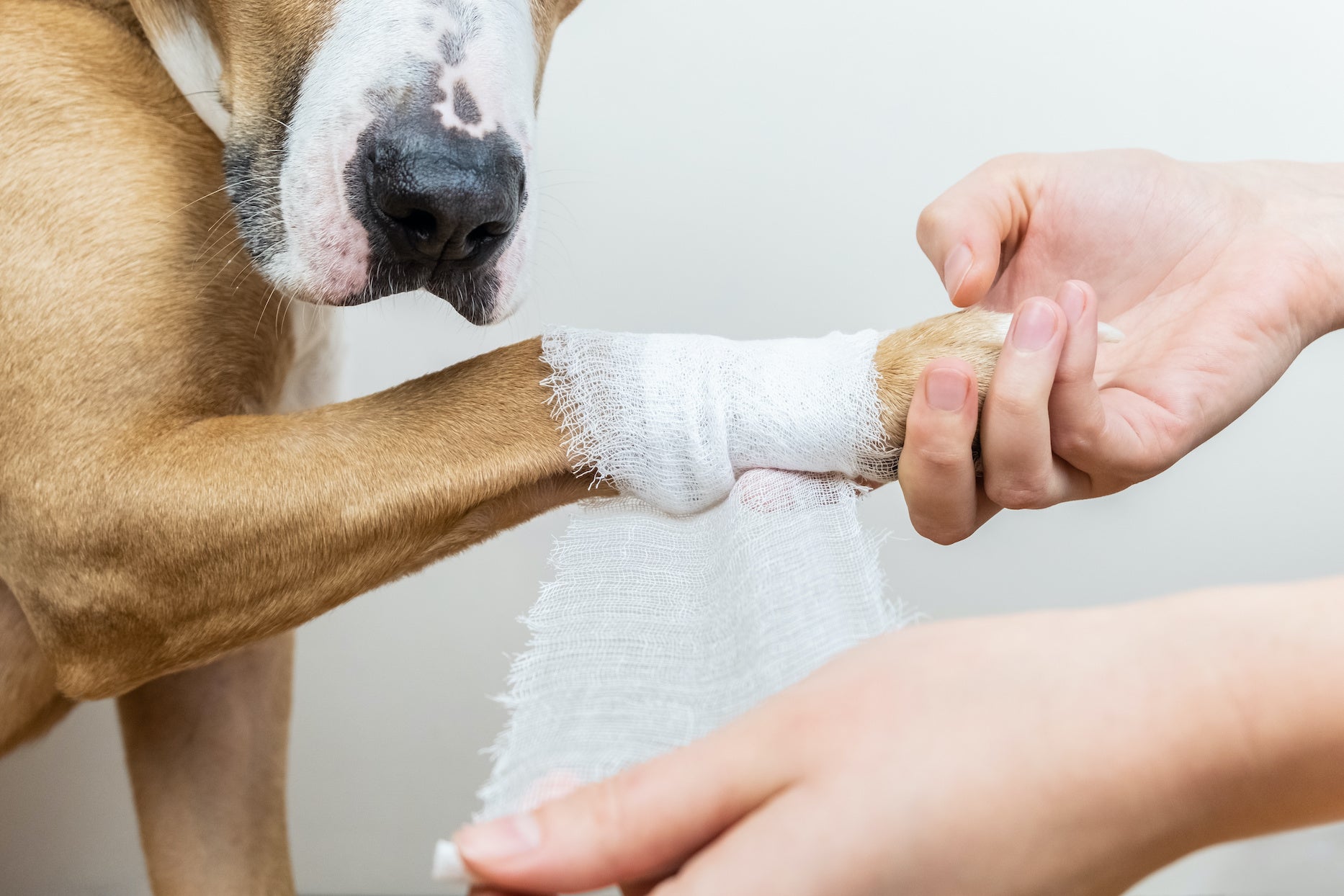
First Aid
Whether you’re going for a neighbourhood walk or a long hike in the woods, having a travel first aid kit for your dog can come in handy for anything from bug bites to minor cuts or major wounds.

Wounds, cuts and scrapes
If your pup suffers a cut or wound, follow this wound care treatment and healing protocol
- Rinse the wound with body temperature or colder water - not too hot.
- Ensure that any dirt, sand and hair are out of the wound.
- Dry the wound with sterile gauze.
- Spray Skin Spray on the wound.
- Apply Skin Spray on a piece of sterile gauze, apply it to the wound and secure the gauze with a Vetrap bandage (Self-adhesive bandage).
- Change the bandage twice daily and repeat steps 1 to 5.
- If the cut is on your dog’s paw, cover it with a bootie or bag when your dog is outdoors to ensure the gauze does not get wet or dirty.
- Once the bleeding has stopped and healing has begun, help your dog’s wound heal faster by following this scab removal protocol.
Watch this video for demonstration on “injured fruit”.
* Please note that if your dog has a deep wound or puncture and is bleeding excessively, please visit your veterinarian immediately as your pup may require stitches. Remember that in most cases, toxic chemicals and antibiotics can be replaced by a natural wound-healing alternative, such as Skin Spray.
Read the following articles for more on wound care for dogs:








